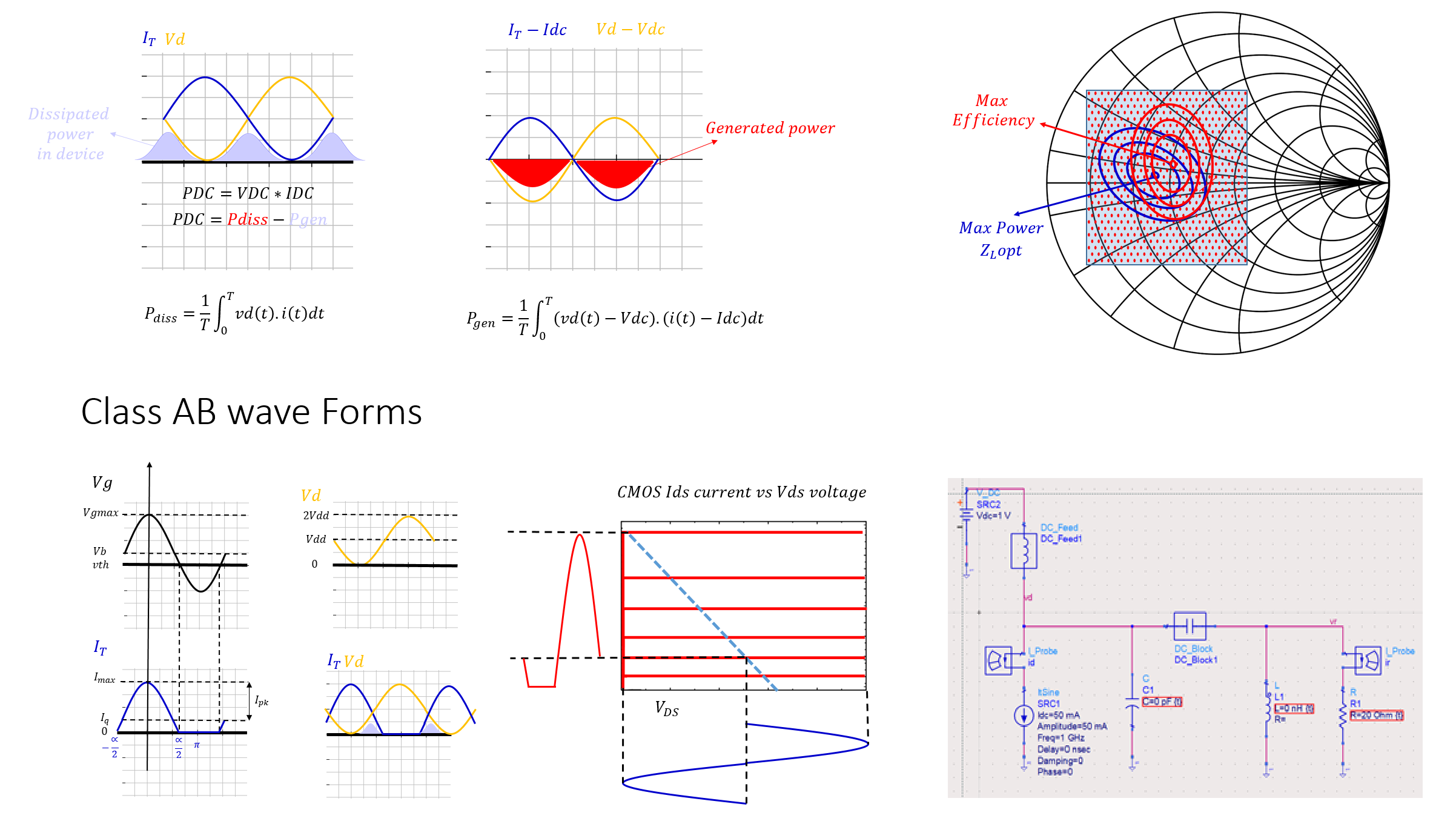- Course Title: Linear RF Power Amplifier (PA) Design Theory and Principles – RAHRF562Course Description: Welcome to the Linear RF Power Amplifier (PA) Design Theory and Principles online course, RAHRF562. This course provides a comprehensive exploration of the theory and principles behind designing Linear RF Power Amplifiers, a critical component in modern wireless communication systems.Chapter 1: Introduction to Power Amplifiers
- An introductory overview of the course.
- Understanding the fundamentals of power amplification.
- Exploring the various types and applications of RF Power Amplifiers.
Chapter 2: Power Amplifier Fundamentals
- The generation and dissipation of power in RF amplifiers.
- In-depth analysis of basic power amplifier operation over one cycle.
- Examining power dissipation and generation in amplifiers.
- Evaluating power and efficiency considerations.
- Practical simulation of one cycle of operation.
- Understanding optimum load and its simulation.
- Introduction to load lines in amplifier design.
Chapter 3: Power Amplifier Circuits
- Overview of general power amplifier circuitry.
- Analysis of complex loads and their implications.
- Exploring a practical example of complex load analysis.
- Simulation of complex loads and considerations for matching design.
Chapter 4: Load Pull
- An introduction to load pull analysis in power amplifier design.
Chapter 5: Class A Power Amplifier Design
- Detailed examples and considerations for designing Class A power amplifiers.
- Designing load networks in ADS for Class A amplifiers.
Chapter 6: Power Amplifier Classes and Efficiency
- Understanding the different classes of linear RF power amplifiers.
- In-depth analysis of Class A power amplifiers.
- Exploration of higher efficiency power amplifiers such as Class AB, B, and C.
- Calculation examples for different power amplifier classes.
- A comparison of output power between Class A and Class AB.
- Comprehensive comparison between different power amplifier classes.
- Load network design for Class AB to C amplifiers.
- Behavioral model simulation for Class AB power amplifiers.
This course equips you with the knowledge and skills needed to master the art of Linear RF Power Amplifier design. Whether you are a novice or an experienced engineer, this course provides valuable insights into the theory and principles that drive RF Power Amplifier design in modern communication systems. Join us on this educational journey to enhance your expertise in RF Power Amplifier design.
This course covers all fundamental concepts you need to know about linear RF power amplifiers .
For a complete list of Pre-Requisite and available courses please refer to the below table:
Course Features
- Lectures 29
- Quiz 0
- Duration 4 hours
- Skill level All levels
- Language English
- Students 515
- Certificate Yes
- Assessments Yes
Curriculum
- 6 Sections
- 29 Lessons
- 900 Weeks
Expand all sectionsCollapse all sections
- chapter 13
- chapter 28
- 3.19121 Power Generation and Dissipation17 Minutes
- 3.29122 Basic power amplifier over one cycle of operation14 Minutes
- 3.39123 Power Amplifier Power dissipation and generation10 Minutes
- 3.49124 Power and Efficiency10 Minutes
- 3.59125 One cycle of operation – ADS Simulation17 Minutes
- 3.69126 optimum load13 Minutes
- 3.79127 optimum load – ADS simulation5 Minutes
- 3.89128 Loadline13 Minutes
- chapter 35
- chapter 41
- Chapter 54
- Chapter 68
- 7.19211 Linear RF Power Amplifier Classes18 Minutes
- 7.29212 Class A Power Amplifier5 Minutes
- 7.39311 Higher efficiency power amplifiers (PAs) Class AB, B and C15 Minutes
- 7.49312 Power Amplifier different class calculation examples9 Minutes
- 7.59313 Output power of Class A and Class AB comparison example5 Minutes
- 7.69314 Comparison between different power amplifier classes9 Minutes
- 7.79315 Load Network for Class AB to C18 Minutes
- 7.89316 Power Amplifier Class AB behavioral model simulation22 Minutes


